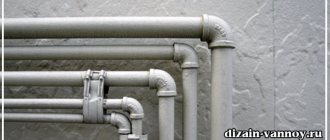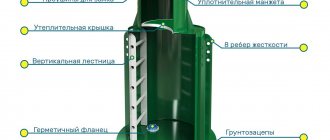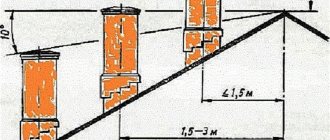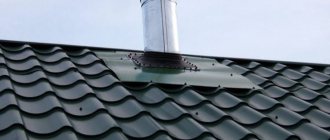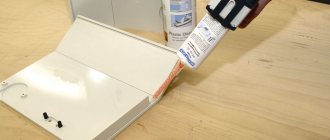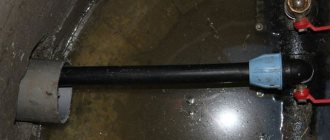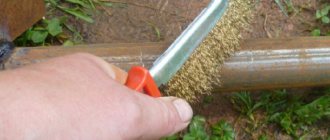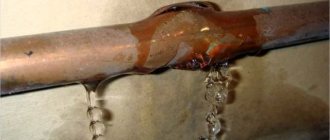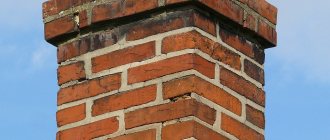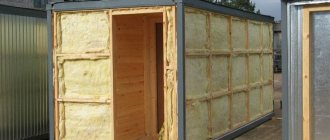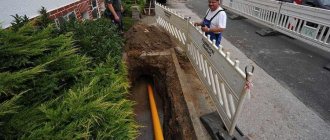For uninterrupted operation of the sewerage system, insulation for sewer pipes is used. To ensure that wastewater can end up in the septic tank, special attention should be paid to the laying of the external structure of the pipeline. This will be discussed in this article.
Buying your own home has always been considered an excellent investment option. However, such an acquisition is associated with the improvement of the building itself and the surrounding area. The owner gets the opportunity to choose whether to build a septic tank on his own, or buy and install a ready-made treatment facility.
Thermal insulation of drains
In most cases, external sewerage is laid in trenches. This is due to the fact that the principles of operation of the system are based on the gravity flow of wastewater. For this reason, for their normal passage it is necessary to create a height difference in the pipeline. But don’t forget about insulation, which helps protect system elements from freezing or mechanical damage.
SNiP requirements
According to the requirements of SNiP for thermal insulation of sewerage systems, to determine the minimum depth for laying pipes, the experience of operating networks in the area should be studied. If the required information on the minimum depth is not available, then a pipe with a diameter of up to 50 cm is laid to a depth of no more than 0.3 meters. Any part with a circumference greater than 50 cm must be laid in the ground at a distance of at least 0.7 m. To determine the minimum installation depth for collectors with fluctuating wastewater flow rates, static and thermal calculations should be carried out.
Note
In this case, all parts placed at a depth of at least 70 cm must be protected from freezing or mechanical damage.
The above SNiP requirements assume that the external sewerage system was not insulated.
In cases where the pipeline is protected from mechanical stress, or the depth of installation of the system allows it, the sewer system can be located at a shorter distance. This will significantly reduce the amount of work performed, and will also provide access to the drainage system for repairs if the need arises.
Why is thermal insulation needed?
The outdoor part of the drainage system is the most vulnerable to seasonal weather changes. The greatest damage is caused by cold sewers. In a snowy winter, snowdrifts serve as sufficient thermal insulation, but in spring and autumn, when there is no snow, and day and night temperatures can sharply change sign from plus to minus and back, weather vagaries can reduce the performance of the system or damage the pipes.
Without thermal insulation, wastewater in the pipeline cools too quickly, not having time to reach the discharge point. A slight negative temperature is enough for the insides of the pipes to become covered with ice. Gradually, ice plugs form inside the sewer, which disables it. And even after the temperature on the street rises, congestion does not immediately disappear, so you have to endure the inconvenience for quite a long time.
In addition, when water freezes, it expands; the resulting ice can cause deformation and cracking of pipes, and depressurization of components. And some materials used to make sewer pipes do not tolerate temperature changes well, even without ice plugs.
With well-equipped thermal insulation, wastewater leaving the house does not cool down and flows freely to the place of discharge, and the walls of the pipes do not have to undergo stability testing before changing temperatures. Therefore, the insulated sewer system remains operational all year round.
The sewage system needs insulation most of all if:
- the site is located in a region where negative temperatures last for a long time;
- the pipeline is long and has many nodes;
- The sewerage capacity is low due to the use of small diameter pipes (less than 100 cm) or when the pipeline slope is less than 1%.
We recommend that you read: How to make a bed frame from a profile pipe with your own hands
Laying the pipeline below the freezing depth
When laying a sewage system on your own, you can try to lay the parts to a depth that will be 10 centimeters below the soil freezing level. With this arrangement, additional thermal insulation of sewer pipes will not be required. Naturally, this is considered an ideal option, but it is used extremely rarely.
Causes:
- The presence of a large amount of work that will have to be carried out when preparing a trench for laying, as well as for digging a hole for a septic tank. If special equipment is not involved, then it is extremely difficult to make such a volume with your own hands.
- In the middle zone, the depth of soil freezing is one and a half meters. It turns out that the pipes will have to be laid to a depth of 1.6 m. In addition, the pipeline must be laid with a slope, so the septic tank must be laid at a depth of two and a half or three meters. The use of such a drainage system is irrational.
- When sewer pipes are too deep, it will be impossible to repair the drain, especially in winter.
It turns out that the choice of the option of deepening below the soil freezing level can be selected only in the case when it is possible to attract special equipment for the work.
Insulation using materials
In order to protect the sewer system from freezing, you can use one of the following insulation materials.
Mineral wool
Mineral wool
This insulation for sewer pipes is considered a classic insulation option. However, when constructing a large sewer system, using mineral wool is not economically feasible. The fact is that the material consumption is too high, and the pipe itself must be completely waterproofed, because the material is hygroscopic, and if moisture gets in, it completely loses its insulation properties.
Polyurethane foam
Polyurethane foam
Such insulation is more often used to protect pipes from freezing, because it is not afraid of water ingress. This material is produced in the form of a half-cylinder and has a special recess inside for parts of the sewage system. Insulation of external sewer pipes occurs due to the presence of special connections on the parts that allow them to be snapped together. Working with such material will not cause difficulties. In addition, we are pleased with the excellent insulation efficiency and low cost.
Penoizol
Penoizol
This insulation is available in liquid form. After hardening, a solid sealed shell is formed on the surface of the pipe, which can effectively prevent freezing of the pipe underground. The disadvantage of this insulation option is the need to use special equipment that is used to apply penoizol. It is for this reason that insulation is not used in the construction of private houses.
Foamed polyethylene
An effective and practical material used for sewer insulation. These products are manufactured in the form of a pipe and have different diameters. To make it easier to put on the insulated element of the system, a special cut is used, which is subsequently sealed with ordinary tape.
Foamed polyethylene
Insulation of the sewage system can also be done using other thermal insulation materials made from foamed polymers and having foil as a protective screen. This type of insulation is often found in industrial construction, since this option will be very expensive for owners of country houses.
Insulating a sewer pipe in the ground: methods
Particularly at risk of freezing are those segments of pipes that go outside the house and are located in close proximity to the surface of the earth. This factor must be taken into account at the stage of construction of the structure. But laying pipes below the freezing depth of the soil is very difficult if the value of this parameter exceeds one meter, and also if there is a high groundwater level. In this case, you cannot do without more expensive methods of insulating a sewer pipe in a private house. These include:
- use of insulating foam shell;
- insulation of external sewerage pipes using heating electrical cables;
- the use of heat-insulating structures of various types;
- combined options.
When choosing a method for insulating external sewer pipes, it is necessary to take into account the climatic zone in which the house is located and the method of laying the pipeline.
Climate zone
The sewer pipe was laid without insulation with rolled materials
It is not necessary to insulate pipes in the southern regions of our country. It is enough to simply lay them underground to the calculated depth, and then fill the pipeline with soil. It is often wrapped with thin insulation. But, as practice shows, such isolation is an unnecessary waste of money.
In northern regions, a heat-insulating structure must necessarily include a thick layer of insulation (minimum 10 cm) and a protective box.
Helpful advice! Before insulating a sewer pipe in the ground, do not be lazy and study as many types of thermal insulation materials as possible. On the market today you can find ones that are able to cope with low temperatures with a smaller thickness. And this saves effort and material resources.
Pipe laying method
When a pipeline is laid in the ground, its thermal insulation is carried out by filling the trench with expanded clay, asphalt or other material with similar properties.
Insulation of a sewer pipe by backfilling a trench
Roll or slab types of thermal insulation are often used. But in the latter case it will be necessary to create external protection for them. It can be realized by creating a box of concrete blocks or bricks, which must be waterproofed. Only then will ice plugs from sewage not form in insulated sewer pipes in the winter, which will save the owner of a private house from unnecessary extra expenses.
Application of special cable
Insulation of sewer pipes in the ground is carried out using a cable that can be run along the surface of the pipe or along the inner wall. In the second option, the gasket is made in a special channel made of protected material. In the case of active insulation of the sewage system, pipes can be laid to a depth of half a meter. However, it is important to remember that such a sewage system will be energy independent. If there is a power outage in the area, the pipes will stop heating. For insulation, you can choose a self-regulating or regular cable. Of course, the second option will be much cheaper. However, the pipe will heat up along its entire length, which will lead to uncontrolled energy consumption.
Heating cable
Principle of operation
The principle of operation of a self-regulating cable is based on cyclicity, that is, only those parts of the system are heated where the temperature level drops below the permissible norm. The high price of a self-regulating cable will quickly pay for itself due to the low costs of maintaining performance.
Installation procedure and pipe insulation
When the insulation material has been selected, you can proceed directly to the installation and subsequent protection of the pipes from freezing. The work must be performed in the following sequence:
- The trenches are being prepared. They should be dug at least 60 cm wide (when the 110 mm sewer pipe is subsequently insulated for external sewerage), and the depth should be 0.1 m greater than the initially planned parameter. It is important to maintain a slope of several degrees when digging trenches.
- A margin of 10 cm will be required to prepare sand cushioning. To do this, you need to pour sand into the trench, in a layer of the indicated ten centimeters, and compact it well.
- Pipes are laid out along the entire length of the trench, as well as the elements necessary to connect them at each section.
Connections
- Connections are being made. In most cases, during the assembly of parts of the future pipeline, a connection is used, which is popularly called “into the socket”. The contact points between the parts should be well sealed. For these purposes, you can use any known means or special cuffs.
- The insulation of the sewer pipes is put on and secured. It should be fastened so that the material does not allow free play, that is, it fits tightly to the part. To do this, you can simply wrap insulation tape around each drain pipe. Such a simple fastening will be an additional guarantee that the material will not move due to soil movements that occur during freezing and subsequent thawing.
You may also like - Sewerage in a private house - do-it-yourself step-by-step installation
Let's fall asleep
- A layer of sand is poured over the finished pipeline. Compacting should be done on the sides, since dense compaction of sand above the pipe itself will cause mechanical damage to the structure.
- At the last stage, the trench is completely filled with soil. In this case, you should definitely make a small hill, since the soil will certainly subsidence over time.
Insulating sewer pipes is considered an activity that not all installers recommend. However, when building your own home, it is better to devote some time to completing these works.
The cost of materials will not greatly affect the overall financial investment in construction. And the insulation itself will protect the owner from freezing of external pipes and such negative consequences as a sewer break, the elimination of which will have to spend a much larger amount.
Everything useful about sewerage -
GidKanal | Yandex Zen
Insulation for sewer pipes
Thermal insulation materials are available in four types:
- roll,
- molded,
- sprayed,
- backfill.
Insulation materials differ not only in their release form, each of them has its own pros and cons:
| Insulation | Release form | pros | Minuses |
| Expanded clay | backfill | cheap, easy to use, easy to replace | when wet, it loses its thermal insulation properties |
| Penoizol | sprayable | if you have the equipment, it is easy to apply and does not lose its thermal insulation properties for a long time | expensive, installation requires special equipment and protective clothing |
| Glass wool | rolled or in the form of mats | cheap | absorbs moisture and loses thermal insulation properties, is easily destroyed, protective equipment is required for installation |
| Expanded polystyrene | molded | moisture-resistant, bioinert - bacteria do not grow in it, easy to install: easy to cut, no protective equipment required, elements are securely connected to each other | price above average |
| Basalt (stone) wool | molded or in the form of mats | does not absorb water, molded - easy to install, in the form of mats - relatively cheap | high cost, installation requires protective equipment |
| foamed polyethylene | rolled or shaped | moisture resistant, easy to install | thin, so in cold regions it is necessary to lay in several layers, fragile |
We recommend that you read: How to independently build a columnar foundation from PVC pipes - step-by-step instructions
